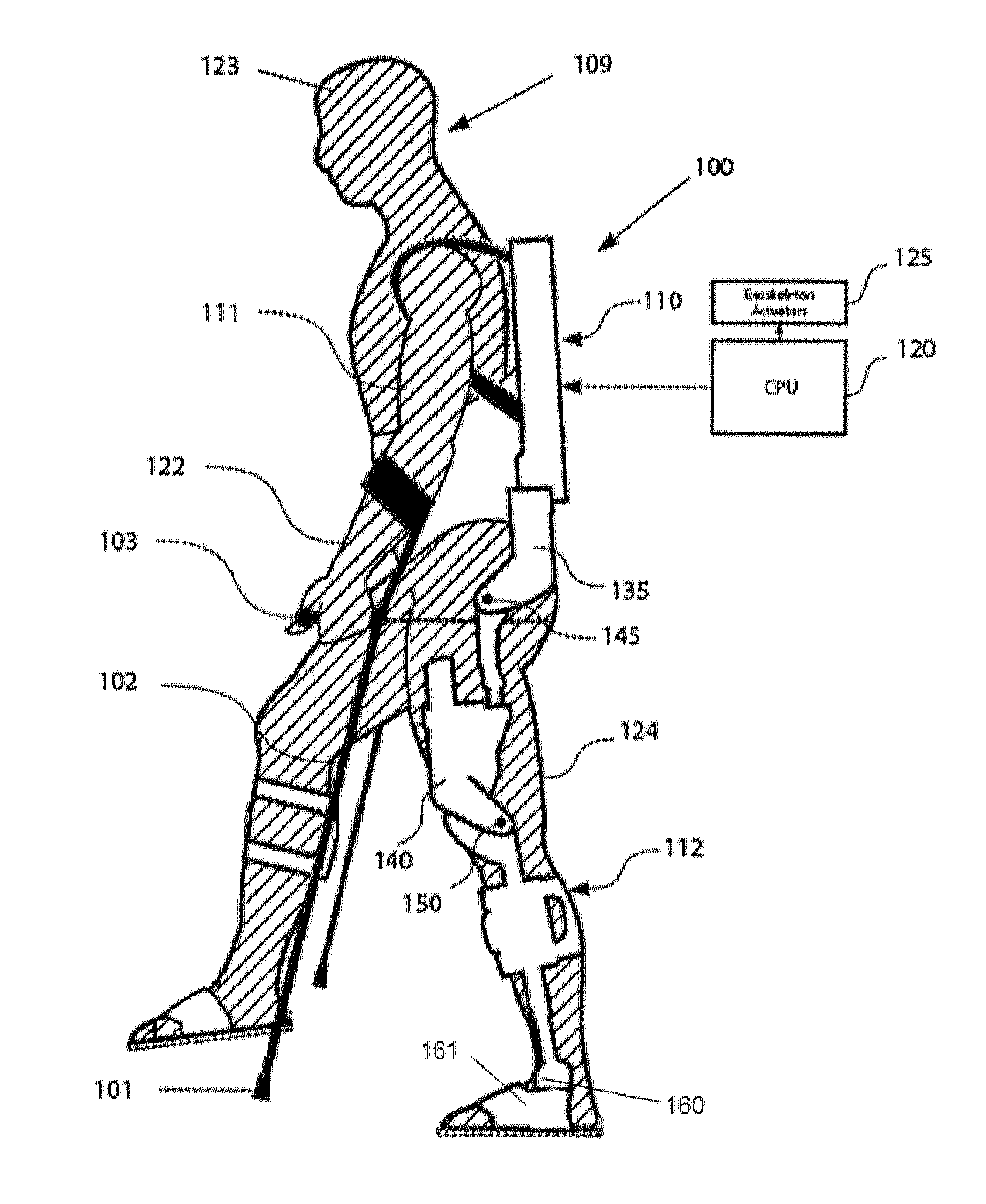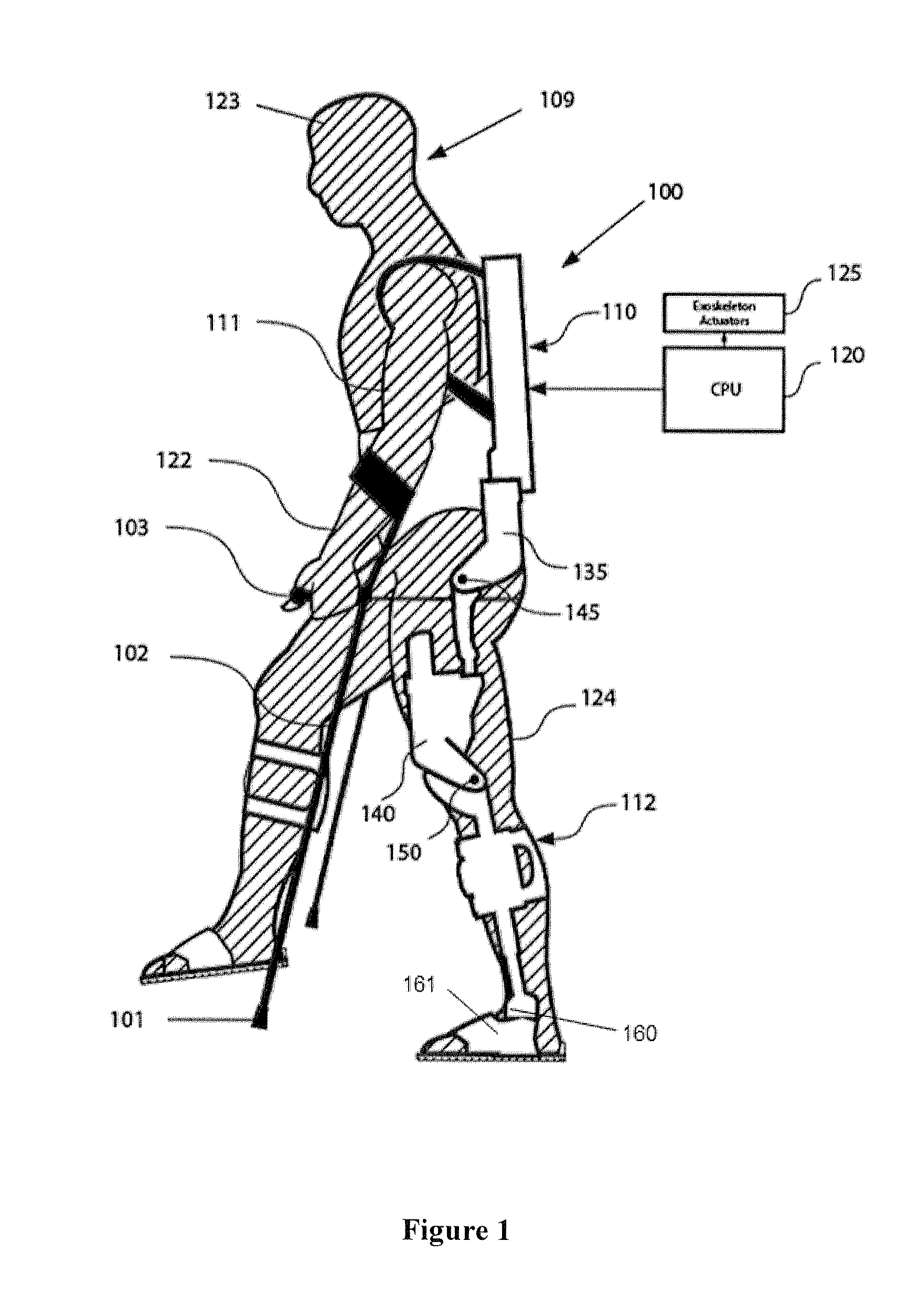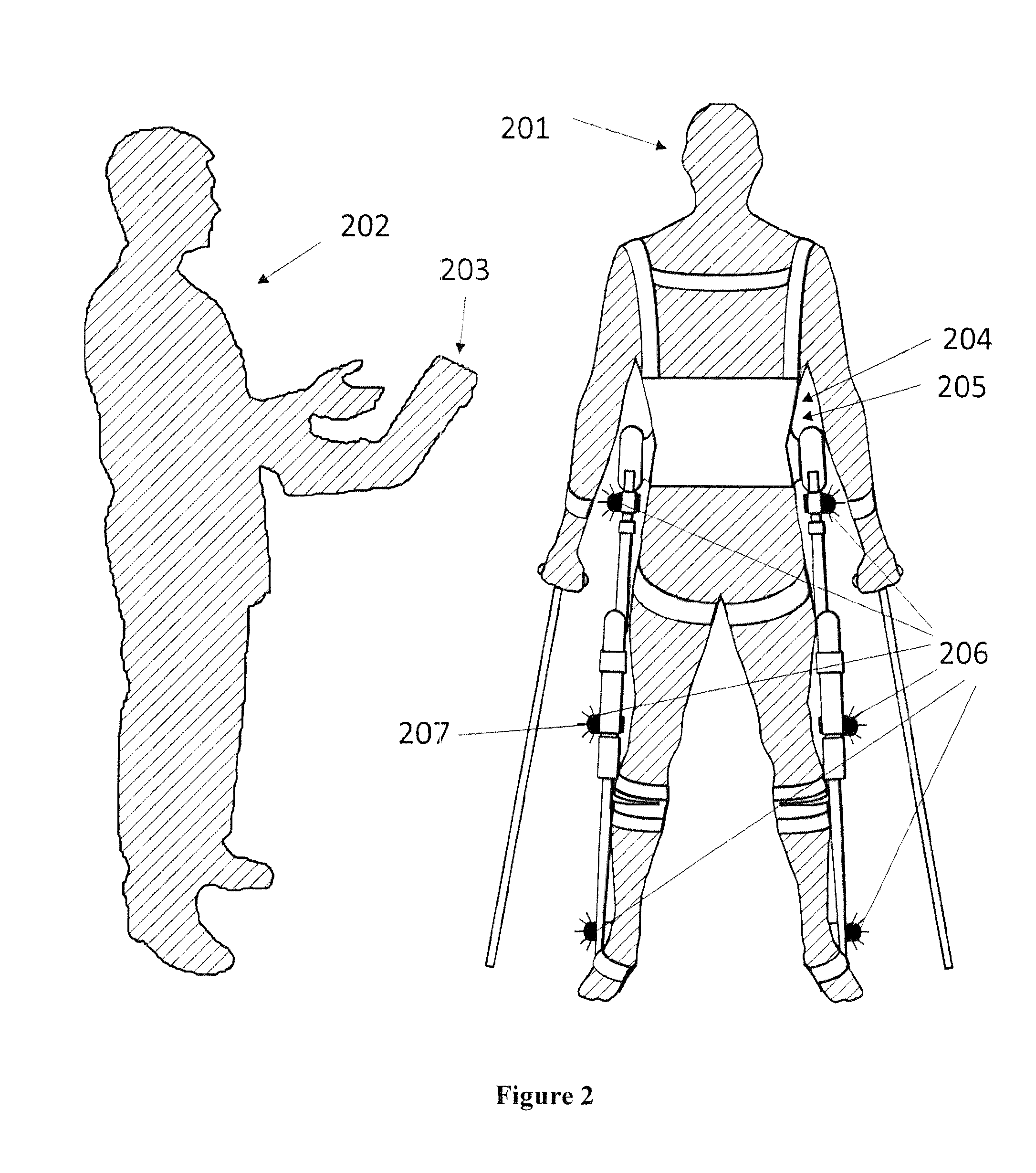Machine to Human Interfaces for Communication from a Lower Extremity Orthotic
a technology of human interface and lower extremity, applied in the field of human interface for communication from a lower extremity orthotic, can solve the problems of additional negative physical and/or psychological outcomes, affecting the function of the affected individual, and affecting the treatment effect of the exoskeleton, so as to achieve the effect of maximizing the therapeutic benefit of the exoskeleton
- Summary
- Abstract
- Description
- Claims
- Application Information
AI Technical Summary
Benefits of technology
Problems solved by technology
Method used
Image
Examples
second embodiment
[0061]In one example of the second embodiment, if a physical therapist wanted to modify the gait cycle of an ambulatory exoskeleton in response to the progression of a patient over the course of therapy, it is helpful to physical therapist to know how much force was being applied by the patient at each joint relative to the forces exerted by the exoskeleton over a cyclical motion such as walking. As the patient progresses over the course of treatment, the patient will exert more force relative to the exoskeleton during various movements. However, the movement of the exoskeleton will look the same. The addition of integral interface point lighting means that provides illumination proportionate to the forces exerted by the patient at one or more exoskeleton-patient interface points allows the physical therapist, or the patient, to receive visual information showing the forces exerted between the exoskeleton and the patient. In a highly simplified example, the physical therapist might ...
third embodiment
[0063]In a third embodiment, the visual feedback system comprises of an exoskeleton system including an integral laser pointer. The laser pointer connected to the exoskeleton structure through actuated means of controlling pan and tilt of beam projection angle. The pan and tilt projection angle actuation means connected to the exoskeleton control system and controlled such that the laser pointer is aimed at relevant location to the exoskeleton wearer such as ideal crutch placement targets, ideal foot placement targets, and next movement target. This would allow the exoskeleton wearer to be intuitively trained in exoskeleton operation as well as allow the exoskeleton wearer to judge more accurately where the exoskeleton movements will take them. It should be noted that a single laser pointer could be designed to overlay a plurality of simultaneous images on the ground by sweeping back outlines on the ground repeatedly, or alternately multiple laser pointers, possibly in multiple colo...
fourth embodiment
[0066]In a fourth embodiment, the visual feedback system comprises of an exoskeleton system including a plurality of integral lighting means, with the lighting means projecting one or more images / targets with plurality of colored lighting means that sum to white light, as well as glasses worn by the exoskeleton wearer with an optical filter that removes one of the colors projected, making the image / target a visible colored light to the exoskeleton wearer and simultaneously a subtle white light to people who are not wearing glasses with optical filters. The lighting means is connected to the exoskeleton structure through actuated means of controlling pan and tilt of lighting means projection. The pan and tilt projection angle actuation means connected to exoskeleton control system and controlled such that the projection means is aimed at relevant locations to the user such as ideal crutch placement targets, ideal foot placement targets, and next movement target. This embodiment has t...
PUM
 Login to View More
Login to View More Abstract
Description
Claims
Application Information
 Login to View More
Login to View More - R&D
- Intellectual Property
- Life Sciences
- Materials
- Tech Scout
- Unparalleled Data Quality
- Higher Quality Content
- 60% Fewer Hallucinations
Browse by: Latest US Patents, China's latest patents, Technical Efficacy Thesaurus, Application Domain, Technology Topic, Popular Technical Reports.
© 2025 PatSnap. All rights reserved.Legal|Privacy policy|Modern Slavery Act Transparency Statement|Sitemap|About US| Contact US: help@patsnap.com



